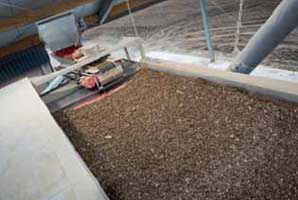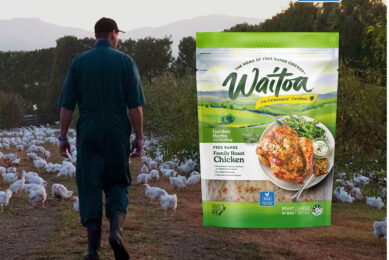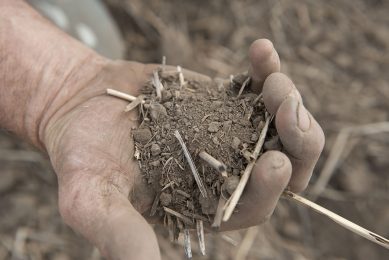Drying poultry manure to protect the environment

Many poultry farmers are looking for solutions to reduce ammonia and fly problems caused by their layer operation. Others are looking for options to make money from the litter by selling it as fertiliser. Both can take advantage of a new poultry drying system introduced by VDL Agrotech.
By Wiebe van der Sluis, Rooster45, Doetinchem, The Netherlands
Poultry litter can be a nuisance, especially when you do not treat it well and leave it wet on a pile in or outside your poultry house. It releases high levels of ammonia causing poor environmental conditions for the birds and the workers inside the house as well as for the neighbours. In addition, ammonia is seen as a gas which harms the environment and for that reason governments insist on minimising the release of this noxious gas into the atmosphere.
Flies like wet litter and fi nd it a perfect place to multiply, which in turn is not really appreciated by farm workers and people living in the vicinity. It is for these reasons that there is increasing interest by medium and large scale poultry producers to dry poultry droppings in as well as outside the poultry house. Most poultry housing systems off er the possibility to dry the droppings at the manure belt inside the house. These systems however have limited capacity and tend to create a lot of dust. Therefore some poultry farmers opt to dry the manure outside the house. They transfer the manure every one or two days from the poultry house to reduce the release of ammonia and the production of dust and moist in the poultry house. By drying the manure in a conditioned environment, where ammonia and dust can be captured, less energy is required.
Manure drying on steel plates
There are a number of systems on the market to dry poultry manure outside the egg production facility. They all have their own advantages and disadvantages. VDL Agrotech, who is involved in the installation of numerous large and smaller scale poultry projects, introduced a while ago their own ‘PoulDry’ poultry manure drying system. The development of this system started in cooperation with experienced engineers involved in the development of other manure drying systems. The PoulDry manure drying system is usually placed in a separate area next to the poultry house. It consists of one or more tiers with direct chain driven revolving galvanised and powder coated steel plates. These plates are perforated, 35% of the surface is open, allowing air to go through for fast and better drying of the manure. The chain runs on a rail and moves the plates in such a way that no manure can get in contact with and harm the moving parts. The unique guide system, combined with a direct chain driver assures a trouble free motion.
Forced tilting
The droppings, coming from the manure belts in the poultry house is evenly distributed over the rotating top layer of the manure drying tunnel. As soon as the manure reaches the end of the fi rst layer the perforated plate tilts and drops the manure automatically on the plates of the level below to continue its way in the opposite direction through the tunnel to release more moisture. Forced tilting of the perforated drying plates at each level guarantees no clogging and no manure sticking on the plates.
The ventilation air is blown at high pressure through the system to reach a dry matter content of 80-85% in less than 72 hours, depending on the atmospheric humidity. During this process the release of fi ne dust is reduced by approximately 70%. Experiences have learned that the process requires low energy consumption and can be easily and fl exibly controlled by a touch screen. The system is easy to install up to a maximum length of 40 meters, which equals a capacity for drying manure of 200,000 layers. Drying manure to over 80% dry matter content reduces odour, ammonia and fl y problems to a minimum and leaves a product that can be easily sold in containers or in bags as a fertiliser for fi eld crops. It can also be pelleted to make it even more attractive to gardeners.












